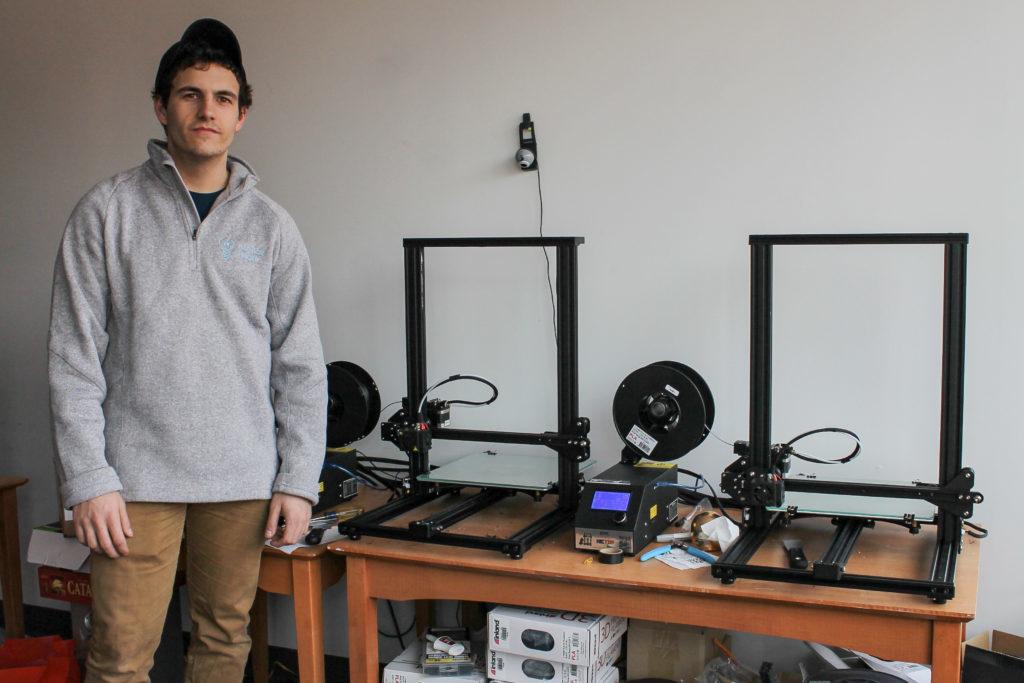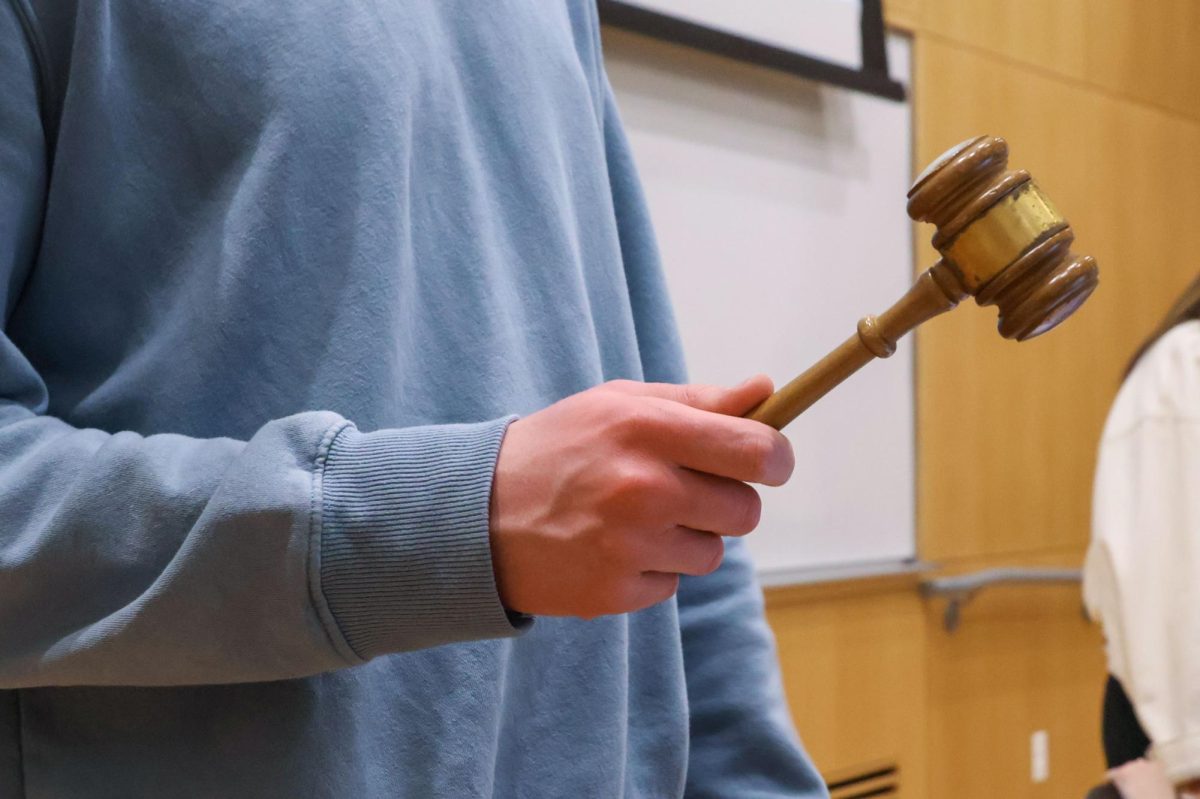Updated: March 27, 2018 at 7:54 p.m.
Two 3-D printers were confiscated from four seniors in South Hall this month after housing and security inspectors claimed the machines could print “dangerous weapons.”
Officials removed the 3-D printers during regularly scheduled room inspections but returned the devices about four days later after determining they weren’t capable of making weapons, students who owned the printers said. Students said safety and security inspectors weren’t qualified to determine whether the machines posed a security risk and questioned the need for the policy banning 3-D printers because some may be capable of making weapons.
Students are prohibited from owning items like firearms and ammunition, as well as 3-D printers capable of producing any of the prohibited items, according to the University’s housing website.
Darrell Darnell, the senior associate vice president for safety and security, said two 3-D printers were removed for further inspection because some are capable of producing items that are banned from residence halls.
“After determining that the printers were not capable of producing items on the prohibited items list the printers were returned to the students,” Darnell said in an email.
He said the policy on 3-D printers “remains unchanged,” but one academic adviser in the School of Engineering and Applied Sciences said the regulation hurts the academic experience of engineering students, according to an email obtained by The Hatchet.
None of the University’s 12 peer schools explicitly prohibit 3-D printers from residence halls on housing safety websites.
Darnell declined to say if security officials spoke to anyone from SEAS about the 3-D printer removal, how officials inspecting the printers determined they were incapable of producing weapons or how long the printer confiscation lasted.
Senior Joseph Schiarizzi, a South Hall resident, said it was “absolutely ridiculous” that a 3-D printer was originally taken from his residence hall room because the technology was not advanced enough to produce a gun or any of the other banned dangerous weapons.
Schiarizzi, a computer science major, doesn’t own the printer that was taken, but jointly owns a second 3-D printer with Poole. He said the safety and security inspectors, who originally reported the printers during an inspection, and the University Police Department officers who confiscated them don’t have the same knowledge as SEAS students on 3-D printing technology to determine whether they could be dangerous.
“None of them are trained or know half as much about a 3-D printer as any of us,” Schiarizzi said. “If they’re coming into our room to make a decision on the capabilities of our hardware they should, I don’t know, be qualified to make that determination.”
Although there were two 3-D printers in the room at the time, the officers only confiscated one of them, he said.
“They don’t know what a 3-D printer is,” he said. “They didn’t even know what they were looking for.”
Schiarizzi said talking away 3-D printers from engineering students amounted to “censorship.”
“If you’re scared I can 3-D print a knife or gun, I can just as easily google how to build a bomb, right?” he said. “But we don’t take away everybody’s laptops”
Senior Christopher Poole, Schiarizzi’s roommate who owned the the printer that was confiscated, said officials infringed on his rights as an engineering student because having a 3-D printer in his room enables him to create higher quality class projects at a faster rate than using the University’s seven 3-D printers.
Poole said he uses the printers daily for personal and class projects, like creating models of wind turbines. He said the students “had the backing” of SEAS faculty and administrators to get the printer returned to the room.
“I think the most ridiculous part is that there was no evidence of us printing a weapon,” Poole said.
Senior Abigail DeMasi, another engineering senior living in South Hall, said inspectors also removed a 3-D printer from her room around the same time as the other incident. She said getting her printer back was a complicated and arduous process that involved contacting the safety and security office, the School of Engineering and Applied Sciences and the Office of Student Rights and Responsibilities.
She said taking away the printers reflects a larger problem with GW’s safety regulations because it’s unclear whether UPD and safety inspectors understand the degree of danger associated with 3-D printers.
“I think maybe theoretically you could make a weapon with a 3-D printer, but it would be horribly inefficient,” she said. “It’s not even worth the hassle. It’s easier to just go get one.”
A 2015 study by the journal Science and Engineering Ethics found that while 3-D printed guns could represent a threat to law enforcement, it remains difficult to produce those items with household 3-D printers.
Murray Snyder, a mechanical and aerospace engineering professor who DeMasi said serves as her adviser and listened to her concerns, declined to comment.
Bhagirath Narahari, the associate dean for undergraduate services and a professor of computer science, said in an email to the students obtained by The Hatchet that he was “sorry to hear about their experience,” regarding the room inspections.
Narahari said in the email that he and Deputy Provost Terry Murphy discussed reviewing the policy that prohibits 3-D printers in residence hall rooms in the near future.
“We also discussed the need to change the policy since it adversely affects the learning experiences and outcomes of engineering students,” Narahari said in the email. “I was told that the office that formulates these policies will be looking into the changes.”
This post was updated to reflect the following corrections:
The Hatchet incorrectly reported that Schiarizzi uses the 3-D printer that was confiscated. That printer belongs only to Poole. The Hatchet also incorrectly reported that there were four printers in Poole’s room at the time of the inspection. There were two printers in the room at that time. We regret these errors.
Editor’s note:
An earlier version of this post misattributed a quote from Schiarizzi to Poole. It is now properly attributed.





